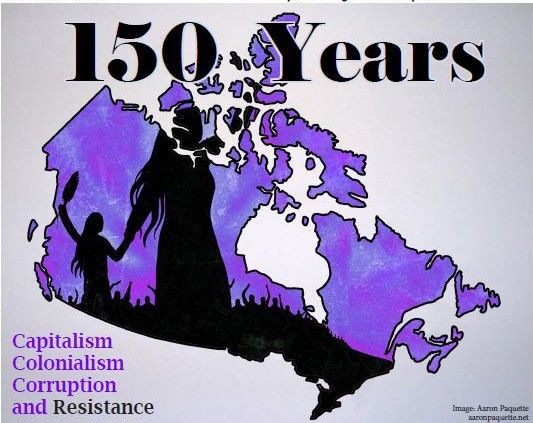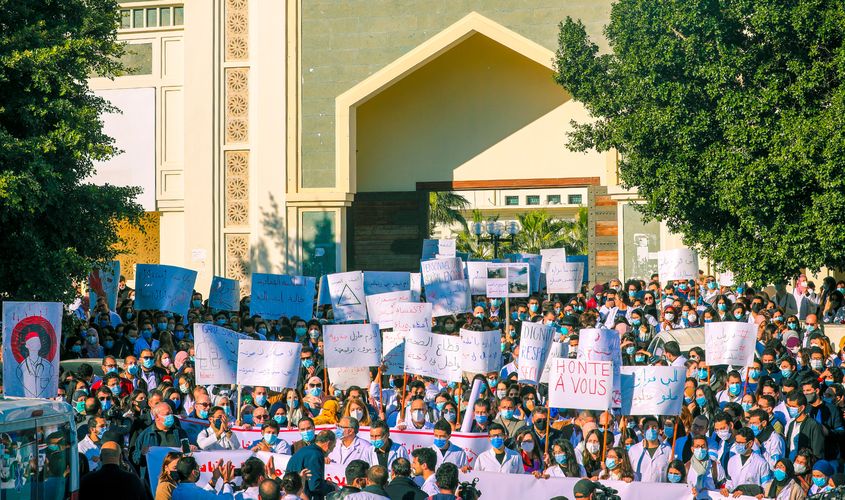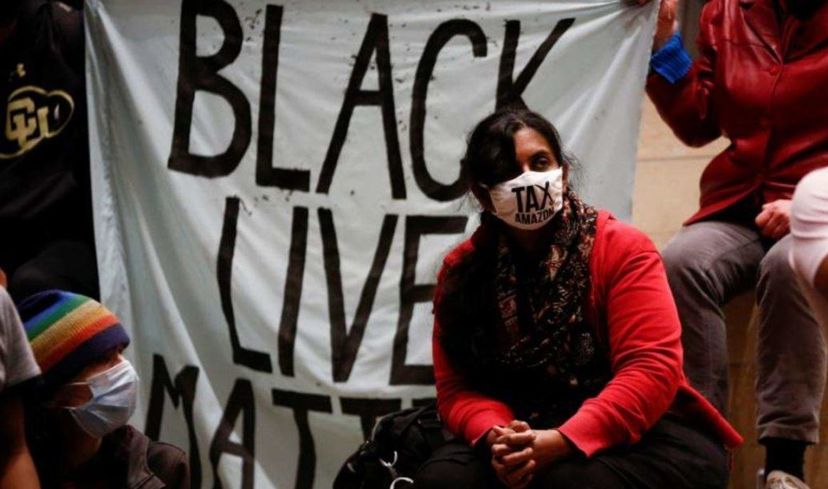Eljeer Hawkins is a member of Socialist Alternative in the US.
On December 4, 1967, Dr. Martin Luther King, Jr. and the Southern Christian Leadership Conference (SCLC) announced a new campaign and mass march to shed light on the endemic poverty, inadequate housing, and structural unemployment existing in the middle of the massive postwar economic upswing after World War II. To understand the importance of this initiative, we have to look at the dynamic of the black freedom struggle at that point and the evolution of Dr. King’s thinking in a radical direction. The postwar boom had contradictory effects. It improved the material conditions of a section of the black population and raised their confidence to fight, and made segregation and searing racism even more intolerable. At the same time, large sections were left in appalling rural and urban poverty. The confidence to fight was further reinforced in the North by the experience of hundreds of thousands of black workers in militant mass industrial unions grouped in the Congress of Industrial Organizations (CIO). On top of that was the experience black soldiers in World War II and Korea who came back determined not to put up with being treated as subhuman. These ex-soldiers played a key role in the early stages of the Civil Rights movement. Civil Rights Movement Goes North After the enormous victories of the movement in the South, a new phase of the struggle opened up in the North that posed different challenges. The urban explosions in Watts, New York, Detroit and many other cities in the mid-to-late 1960s were the culmination of the failure of capitalism and President Lyndon B. Johnson’s liberalism to solve the systemic problems faced by the generation of African Americans who migrated to the North in the 1920s and ‘40s to escape rural poverty, white supremacy, violence, and Jim/Jane Crow. In 1967 alone, there were 160 social explosions from January to September. The Kerner Commission report would confirm what many in the black freedom movement and black community knew to be true – that urban explosions were not caused by militant instigators, but by the conditions of racism, abject poverty, and systemic federal government neglect. Dr. King’s travels to Watts in Los Angeles and black communities in northern cities helped him realize that their culture, leadership, and urban landscape were very different from the conditions that blacks faced in the South. The African American community in the North questioned Dr. King’s tactics of nonviolent civil disobedience. Dr. King and the movement would invest time to firmly understand the conditions of black workers and poor people in the North, including Dr. King and his family renting an apartment on the predominantly black West Side of Chicago. The black power movement was inspired by the revolutionary struggles in Africa, Latin America, and the Caribbean. Individuals like Robert F. Williams and Malcolm X, and organizations like the Black Panther Party, the Student Nonviolent Coordinating Committee (SNCC), and the Radical Action Movement provoked wide ranging discussion of self-determination, self-defense, political, and economic power. The black power movement included different political trends, ranging from socialism, revolutionary nationalism, to Maoism and black capitalism. It challenged Dr. King to reformulate his thinking and brought out his radical side. The earlier phase and character of the civil rights movement was linked to the liberal wing of the Democratic Party and was dominated by a gradualist approach, turning the spotlight on the brutal realities of white supremacy and institutional racism in the South. The aim of the movement was to embarrass the U.S. government and to enforce legal equality, including voting rights in the South. King and the Vietnam War To fully understand the development of Poor People’s Campaign, one must examine Dr. King’s Beyond Vietnam: A Time to Break Silence speech on April 4,1967 at the Riverside church in Harlem, New York. Beyond Vietnam was a powerful indictment of U.S. imperialism. It marked a watershed moment in Dr. King’s public ministry and the civil rights and antiwar movements. It was events, including the diversion of half a billion dollars from community action programs to war spending in Vietnam, as well as the increasing death toll of U.S. soldiers – particularly black soldiers who were disproportionately placed in combat units – that caused Dr. King to come out publicly and forcefully. From January through November 1966, almost a quarter of army casualties were black. The themes of the Beyond Vietnam speech co-written by historian and reverend Vincent Harding would draw on the interconnection of the national and international struggle for freedom and economic justice. Dr. King’s use of the terminology of imperialism, colonialism, racism, nuclear war, militarism, and poverty – casting big business and the American government as the greatest purveyor of violence, supporting some of the most brutal dictatorships in the world – showed he had started to analyze the foundations of global capitalism and its violent expression: war. Speaking in 1966, Dr. King stated, “We are dealing with class issues. Something is wrong with capitalism. Maybe America must move towards democratic socialism.” His socialism, however, was not rooted in a serious class and Marxist analysis of capitalism, despite reading the works of Marx. Dr. King was inspired by early Christianity and an egalitarian interpretation of the Christian faith. Dr. King’s Christian democratic socialism was never articulated at public events or in the pulpit, only at SCLC private meetings. He was unwavering in his belief in a more humane and spiritual vision of the world. The Birth of the Poor People’s Campaign The birth of the Poor People’s Campaign is rooted in a critique of U.S. capitalism, including opposition to consumerism, imperialism, militarism, racism, and structural poverty. Dr. King spoke of putting people’s needs first before profit margins, raising the question of political and economic power. The Poor People’s campaign came out of an intense debate and discussion within SCLC around its goals and aims in combating poverty, and the resources needed for such a grand project. The Poor People’s Campaign would eventually create a rift in the SCLC with many of the leading activists seeing themselves as organizers for black people exclusively, and not the wider working class and poor. The plan was to organize a mass march on April 22, 1968, culminating in a permanent tent encampment in Washington, D.C. titled “Resurrection City” until their demands were met. The title of the encampment was a religious reference to the resurrection of Christ, serving as a testimony to the resurrection of human beings. The demands included a number of radical and far-reaching reforms:- $30 billion annual appropriation to fight poverty [$213 billion today];
- Congressional passage of full employment;
- Guaranteed annual wage;
- Construction of 500,000 low-cost housing units to eliminate slums;
- Petition the government to pass an Economic Bill of Rights.




